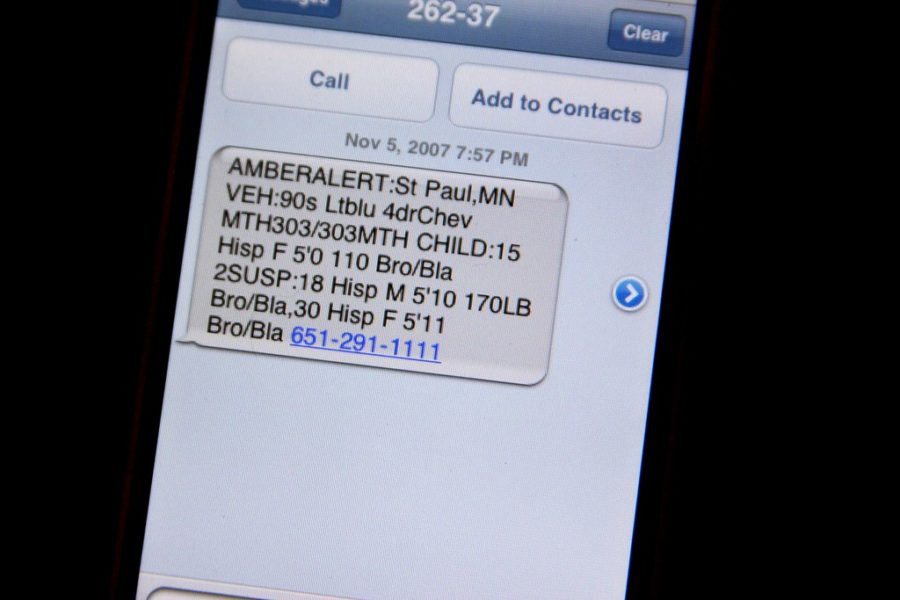America’s Missing: Broadcast Emergency Response
April 23, 2021
On Jan. 13, 1996, Amber Hagerman and her younger brother, Ricky Hagerman, rode their bikes to a grocery store two blocks away from their home in Arlington, Texas. She wanted to stay in the parking lot for a while, so Ricky went home without her. He came back later to fetch her only to discover her bicycle with Amber nowhere to be seen. The Hagermans notified the news and the FBI, and began searching for Amber.
Unfortunately, Amber’s body was found four days later in a creek with a severely lacerated neck, less than five miles from where she had gone missing. She was nine years old.
Amber’s killer would never be found, but the crime sparked the creation of the AMBER Alert, an alert system that notifies community residents to assist in the search and recovery of abducted children. The name comes from Amber herself but is also an acronym for America’s Missing: Broadcast Emergency Response.
You may have received AMBER Alert notifications in the past. All major wireless carriers distribute AMBER Alerts and most smartphones receive them. You are automatically subscribed to receive these alerts if you possess a Cellular Telecommunications Industry Association Wireless Emergency Alerts Capable-enabled phone.
Even when you have Do Not Disturb turned on, AMBER Alerts still come through with their jarring screeching sound coupled with vibrations and an emergency text message on your screen. This ensures more people see the notification and may be able to help recover the victim.
In California, only California law enforcement agencies can initiate AMBER Alerts when certain criteria are met. An abduction must be confirmed to have occurred, the victim must be younger than 18 or have a mental or physical disability, the victim may be in imminent danger of serious injury or death, and public involvement may assist in the victim’s recovery.
According to the California Highway Patrol’s Amber Alert page, “If you witness a child abduction, call 911 immediately to report it. Be prepared to provide the location of the abduction, descriptions of the child and suspect, and make, model, color, and license plate number (if possible) of any vehicle involved.”
The alert system has received criticism for perceived flaws.
“The AMBER Alert system has an inherent contradiction structured into it,” said assistant professor of criminal justice Timothy Griffin. “There are specific criteria that are supposed to be met for an alert to be issued. The problem is it takes time to verify those criteria. At the moment of truth, when a decision has to be made, often law enforcement officials are busy verifying whether the case satisfies those conditions.”
Because law enforcement officials need to make rapid decisions, some AMBER Alerts turn out to be false alarms. Simultaneously, AMBER Alerts are often not issued quickly enough, which is dangerous considering, according to research into child abduction statistics, about three quarters of children who are kidnapped and killed are murdered within three hours of being abducted. Furthermore, the frequency at which AMBER Alerts are issued causes people to begin disregarding their seriousness.
The AMBER Alert system does have its successes. Since its inception in 1996, 1,029 children have been rescued thanks to AMBER Alerts. In over 17% of AMBER Alert cases, the direct recovery of children directly resulted from the AMBER Alert.
Photo courtesy of FLICKR.COM

